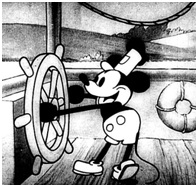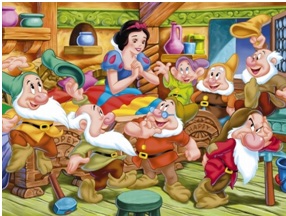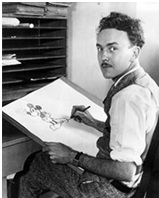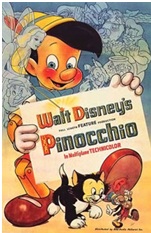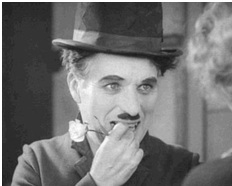|
 |
|
 |
|
|
||
Walt Disney Leadership
Walt Disney (1901-1966)
Famous for his animated films and characters like Mickey Mouse, although Mary Poppins (1964), was his biggest earning film. He (pictured right) opened Disneyland (near Los Angeles) in 1955 and was building Disney World in Florida, when he died.
Why was he a great leader?
1. Innovation and risk taking He was a brilliant and innovative storyteller. The idea of Mickey Mouse came from a real mouse he kept in a cage on his desk. He wanted to call him Mortimer, but his wife, Lillian, told him this was “too
sissy” and suggested the name Mickey on a train journey from New York to Los Angeles. Steamboat Willie (1928), Mickey Mouse’s first film (pictured right), was the first popular sound cartoon. Despite the risk of extra expense, he also produced the:
He always preferred technical innovation to cutting costs. Pinocchio (1940), Fantasia (1940) and Bambi (1942) all failed to recover their production costs, despite being artistic triumphs. He was also the first movie boss to go into television.
2. Vision and challenging aims His purpose was “to bring happiness to the millions”, giving inoffensive and moralistic family entertainment like Snow White, pictured right below. So he wanted his cartoon characters to be human and lovable. He believed that the four C’s were vital for success: a) curiosity Continuously searching for new and better ways of doing things.
b) confidence, courage and constancy (to achieve his dreams and belief in goodness and decency).
“Always remember that this whole thing was started with a dream and a mouse”, he said.
3. Customer satisfaction He was motivated by a real love of his customers, not just by profit (saying that Disneyland was “a work of love”). People loved his good-natured heroes like Mickey Mouse, who triumphed over evil with great drama, emotion, humour and music. This particularly cheered people up during the Great Depression of the 1930’s. He also cleverly used his characters in:
4. Great people He was ably assisted by his brother, Roy (pictured right above), and great animators like Ub Iwerks (pictured right below) who drew Mickey Mouse, even though Disney led people to believe that he had. Continually stealing the animators’ limelight caused a great deal of resentment. But he still saw his studio as one big happy family and particularly valued loyalty. He was brilliant at giving people the job that was just right for them and paid them well, particularly the animators.
5. Charisma His employees were inspired by his charisma including the women who fell for his handsome looks and charm He was particularly kind to them as long as they knew their place (ladies didn’t get the best jobs like animation). On Christmas Eve, 1939, when everyone was working late to get Pinocchio (pictured right below) finished, he totally ignored the men, whilst giving out presents to the women! 6. Tough disciplinarian Despite his outward charm, there was a tough, dark side to this character, shown by his:
He fired men for swearing in front of women and banned:
7. Obsession with work He ate, slept and breathed movies, immersing himself in his characters and sleeping at work to get away from his baby daughter’s all night crying! “I love Mickey Mouse more than any women I have ever known”, he said.
8. Optimism He always thought the future was full of opportunities and hope. “Believe in the future”, he said.
9. Persistence and determination He saw his films to completion, despite big artistic and financial problems (e.g. Snow White, took three years to make). He also had to overcome:
His father viciously beat him, and he couldn’t understand why his mother (pictured right with Walt) let him do it. He spent a lifetime looking for his real mother, because he feared he was illegitimate and adopted. But he said that all his troubles:
10. Lifelong learning Charlie Chaplin (pictured right in the film City Lights) was his big hero as a child, and he learned much from his films. Disney also learned from his mistakes, came up with better ideas and put them into action. New ideas, not money, excited him.
Key quotes on vision and objectives All our dreams come true, if we have the courage to pursue them. Always remember this thing was started with a dream and a mouse.
Key quote on buyer behaviour People spend money when they feel good.
Key quote on work It’s kind of fun to do the impossible. Fancy being remembered around the world for the invention of a mouse!.
Key quote on leadership Of all the things I’ve done, the most vital is co-ordinating those who work for me and aiming their efforts at a certain goal.
Key quote on success I do not like to repeat successes, I like to go on to other things.
Key quote on motivation The way to get started is to quit talking and begin doing.
Key quote on innovation Get a good idea and stay with it. Do it, and work at it until it’s done right. |
|
|
||
|
|
||
| Copyright © wisdomtowin.com 2025 All Rights Reserved | ||
|



